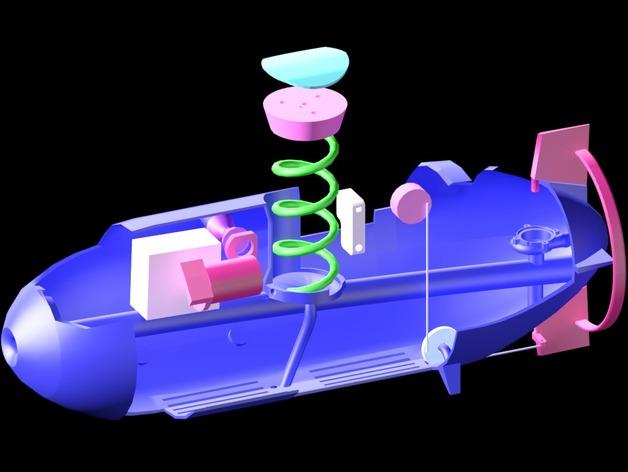
Today, we bring you a 3D printed catfish; well, actually, a 3D printed submarine known as “The Catfish.”
This contribution to the population of Thingiverse is from Mike Blakemore, who in addition to holding a serious day job, wanted to create something fun to play with. Quick to give credit to his original source of inspiration, an RC Motor Boat by Wersey, his design is anything but derivative. And he makes it sound so easy to create.
“With the exception of electronics, motors, wire, rubber tubing, a metal valve, and some fishing line, the entire submarine is 3D printed. You’ll need to print out Hull-A through Hull-Z and any accessories, glue it together, add your electronics, calibrate your sub, and you [are] ready to go,” Blakemore says.
However, as history tells us, creating a working submarine is not as easy as sinking a boat that can still move forward. In the 17th century, the first reliable reports of a submarine
“I chose to use an air pump instead of compressed air tanks, which is what big submarines use to evacuate water. In order for an air pump to get air in, a coil of plastic or rubber tubing runs from the middle/top of the sub to a float/bogger that stays at the surface of the water. This also makes for good chances of recovery should the batteries run out,” Blakemore explains. “There is a small DC motor inside the sub that can reel in the float using fishing line. Even an inch of water can kill wireless signals, so the float can also be used to hold an antenna up out of the water and a bell crank is used at the bottom of the sub to convert vertical motion from a servo to a horizontal motion which drives the rudder.”
“This is a fully working submarine capable of carrying electronics and other cargo,” Blakemore notes. “The entire inside of the sub (up to a max fill line) is used as an internal ballast tank. Submarines have holes on the bottom that are always open, allowing water to move freely in and out of the ballast tanks. Air is then pumped in or released, changing the amount of water stored in the tanks. The submarine floats when filled with air and sinks when filled with water.”
When not creating RC submersibles, Blakemore is the CEO of Hyperplane Interactive and one of the creators of Touch Control System, a 3D development platform/game engine for creating futuristic touch screen project interfaces.
Now, to fit one of those on a miniature submarine…
Let us know what you think of this Make It Float entry in the 3D Printed Miniature Submarine forum thread over at 3DPB.com.
